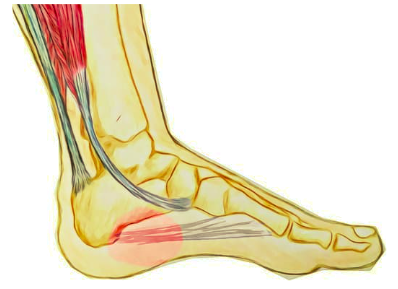
The plantar fascia is a thick fibrous band on the
underside of the foot that helps to support the arches
and deep muscles of the foot. Often over time, if any
stress that is put upon the plantar fascia becomes too
much and it can begins to degenerate, causing pain
when the foot is placed on the ground.
Plantar fasciopathy is also known as plantar fasciitis and can be notoriously difficult to treat. It is a
progressive condition but in some cases a self-limiting one. The condition does sometimes,
eventually resolves itself. Without treatment, however, the condition can take up to two years to go
away and is extremely painful in the meantime.
What are the symptoms?
The first symptoms are a slight pain on the inside of the heel in the mornings; usually the first steps
of the day arethe most painful. As the condition progresses there may be pain with walking or
running. In severe cases pain might be felt all the time, even when resting.
What is the cause?
For athletes it is likely that the problem is caused by training program errors, poor biomechanics,
tight calves and inadequate support in footwear. In other people, it’s more likely that the problem is
caused by standing for long periods on hard surfaces. Other risk factors include age, poor footwear
choices and increased weight.
How can physiotherapy help?
The first stage of treatment will involve diagnosis and identification of contributing factors. Your
physiotherapist can apply taping techniques to unload the fascia and use hands on techniques to
restore flexibility to the calf muscles and fascia. This can provide great relief of pain, particularly in
the early stages of treatment. A specific loading exercise program will be implemented and they will
also advise you on a suitable training program, footwear and stretches. They can also help make
modifications to your running style if this is contributing to the problem.
There are medical options for heel spur removal, shockwave therapy and steroidal injection however
these treatments work best if used in conjunction with traditional physiotherapy
None of the information in this newsletter is a replacement for proper medical advice. Always see a
medical professional for advice on your injury.
